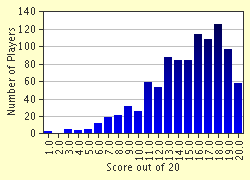Quiz Answer Key and Fun Facts
1. What happened on May 7, 1954 at a place called Dien Bien Phu?
2. In March of 1965 the first large U.S. combat units arrived in South Vietnam. In what area?
3. What do the letters ARVN stand for?
4. What do the letters NVA stand for?
5. What was the primary infantry weapon used by the Communist forces?
6. Who was the commander of the American forces in Vietnam from 1964-1968?
7. Who are the Montagnards?
8. What was the name of the bombing campaign against North Vietnamese territory, carried out by the US Air Force and the US Navy between February 1965 and October 1968?
9. What US heavy bomber was used in the bombing campaign against North Vietnamese territory between February 1965 and October 1968?
10. What is a punji stick?
11. What area of South Vietnam had the largest most complex tunnel system used by the Viet Cong?
12. What city was the ancient royal capital of Vietnam?
13. What was the name of the major Communist offensive of 1968?
14. Who was the commander-in-chief of the Communist forces?
15. What is the name of the route used by North Vietnam to infiltrate troops and supplies into the South?
16. What was the name of the firebase near the DMZ (Demilitarized Zone) which the Communists laid siege to in 1967-1968?
17. Whom did Clark Clifford replace as the US Secretary of Defense?
18. Along with North Vietnamese representative Le Duc Tho, who was the person that signed for the USA at the Paris Peace Accords?
19. Who replaced General Westmoreland?
20. The movie 'We were soldiers' is based on what book?
Source: Author
bowsoljah
This quiz was reviewed by FunTrivia editor
bloomsby before going online.
Any errors found in FunTrivia content are routinely corrected through our feedback system.


